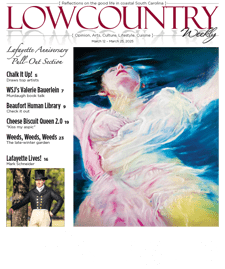If you were raised in the United States, each elementary school day most likely started with rising from your tiny desk, turning toward an American flag – or picture of one – placing your little right hand over your heart, and repeating, along with your teacher, the Pledge of Allegiance:
“I pledge allegiance to the flag of the United States of America and to the Republic for which it stands, one Nation, under God, indivisible, with liberty and justice for all.”
Perhaps your teacher initially talked about what those words meant, about how we mustn’t ever take them for granted, and how lucky we all were to live in a democracy with freedoms galore. She might have added an example or two of living conditions in another country ruled bya dictator or one under communist or fascist rule and about how controlled and limited residents’ lives and their daily choices were.
During the school days that followed, did you remember to think about your teacher’s words? Not likely. I know I didn’t. All too soon, repeating the daily promise while standing with hand over heart became rote. Just rolled that pledge out and went on about my childhood days. Words by Paul Simon from Simon and Garfunkle’s “My Little Town” come to mind: “…as I pledged allegiance to the wall…”.
Back in 1975, the first time I heard Simon’s phrase, I knew exactly what it meant. But again, didn’t give it much thought. Not until recently. Not until the world situation – particularly,the political situation in my own country – began feeling as if my choices were becoming limitedand my country’s flag was being used as a symbol for a doctrine or doctrines that didn’t benefit most of the nation’s hardworking, freedom-embracing, democracy-loving citizens. A weight settled upon my shoulders. Thoughts of the documents that formed and represented a free America came to mind – the Declaration of Independence, the Constitution, Bill of Rights, and then, the Pledge of Allegiance, i.e. our promise to uphold our country’s founding platforms and its freedoms… no matter what.
Along came the Olympic Games in Paris to inject a much-needed shot of “let’s all pull together and support our country’s athletes.” Which many of us responded to while glued to our TVs for hours upon hours. The U.S. team made us proud every time the strains of “The Star Spangled Banner” burst into the background. The competitions came to an end and divisiveness settled back in. Rumors surfaced of replacing the Pledge of Allegiance with – of all things – the Ten Commandments, a Christian religious icon. Granted, if all the earth’s people followed those edicts, the planet would surely be a better place. Wouldn’t it?
But what about the rest of the world’s great religions, some of which are practiced by millions of people daily? According to 2023 statistics, about 30.7% of the world’s population isChristian. Those are followed by 24.9% adherents of Islam, 15.1% Hinduism, 6.6% Buddhism, 5.6% Chinese Traditional Religion, and you can insert 15.58% as secular/nonreligious/atheist/agnostic. Many practitioners of these religions and of a number ofsmaller groups, including Judaism, live and worship in the United States, follow their own religious customs, and would certainly take issue with having the Ten Commandments, a Christian doctrine, posted in a child’s classroom. As would the nonpracticing percentage.
Look back to the beginning of this column and read the message that pledge brings to all citizens. And yes, it does include the words “under God,” but not specifically a Christian, Islamic, or Buddhist interpretation. I believe that phrase is left open for everyone to choose the God of their individual religion to live under.
According to several sources, the first version of the Pledge of Allegiance was penned in 1885 by Captain George Thatcher Balch, a Union Army officer in the Civil War, who later wrote a book on how to teach patriotism to children, especially those of immigrants, in public schools.His version was simple and to the point: “We give our heads and hearts to God and our country; one country, one language, one flag!”
This man worked with the government and private organizations to distribute flags to every classroom and school. He knew war and was determined to steer children away from a mindset that might bring it on again.
In 1892, American Christian socialist Baptist minister and author, Francis Bellamy, wrote the original version of the Pledge for a religion-focused children’s magazine, The Youth’s Companion. A few years later, the publication changed its focus to entertainment and published stories and poems by such writers as Jane Addams, Harriet Beecher Stowe, Mark Twain, Emily Dickinson, Booker T. Washington, and Jack London.
Designed to be recited in 15 seconds, Bellamy’s Pledge of Allegiance read as follows: “I pledge allegiance to my Flag and the Republic for which it stands, one Nation indivisible, with Liberty and Justice for all.” The year Bellamy’s version came out, some 25,000 flags were placed in public schools. The words “to my flag” were changed to “to the flag of the United States of America” because of the large number of foreign children in the schools, and “under God” was added in 1954 by a Joint Resolution of Congress.
These days, the United States Flag Code instructs the Pledge of Allegiance “…should be rendered by standing at attention facing the flag with the right hand over the heart. When not in uniform men should remove any non-religious headdress with their right hand and hold it at the left shoulder, the hand being over the heart. Persons in uniform should remain silent, face the flag, and render the military salute. Members of the Armed Forces not in uniform and veterans may render the military salute in the manner provided for persons in uniform.”
All this for a flag? You’re darned straight! Keep remembering how fortunate we are to live in a democracy that has given so many souls the opportunity to leave an oppressive existence for America, where they’ve been able to embrace their dreams, to shine, and to raise families that can do the same.
In his award-winning song that helped bring Americans together after 9/11, Country music star Lee Greenwood states the thought beautifully for all of our country’s citizenry:
“I’m proud to be an American where at least I know I’m free.”
Do not for an instant take for granted any of the documents and principles that made our country what she has become, one that the rest of the world has looked up to and has come to depend on. Together we can help each other be America Strong. A thriving democracy. One nation…indivisible...with freedom…for all.









